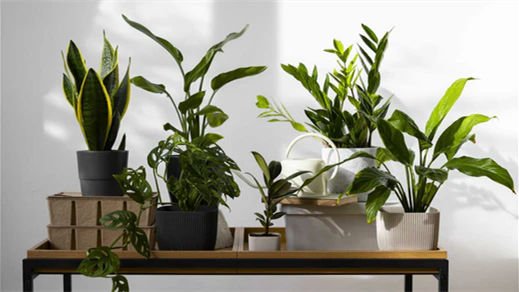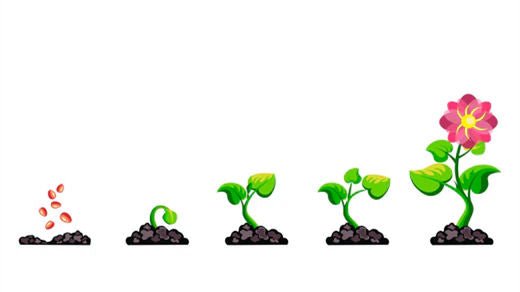Gardening can be a fulfilling hobby, but when your plants keep wilting despite your best efforts, it's understandable to feel disheartened. Often, the difference between a thriving garden and a wilting one is the type of light the plants are receiving. This is especially true for indoor gardens, where natural light may be insufficient. Enter the solution: LED grow lights. This comprehensive guide will discuss how to breathe life into your indoor garden using LED grow lights, ensuring that your plants not only survive but thrive.
1. Understanding LED Grow Lights
Before delving into how to use LED grow lights effectively, it's crucial to understand what they are and how they work. LED grow lights are designed to mimic the spectrum of sunlight, providing a balanced range of blue and red light that plants need for photosynthesis.
a. What Are LED Grow Lights?
LED (Light Emitting Diode) grow lights are energy-efficient lighting options that produce light in the specific spectrums that plants require to grow and develop throughout their life cycles.
b. Why Choose LED?
Compared to traditional lighting options, like fluorescent or HID (High-Intensity Discharge) lamps, LEDs run cooler, use less energy, and have a longer lifespan. This makes them an eco-friendly and cost-effective option for indoor gardening.
- Spectrum Science: Plants absorb various light wavelengths to trigger different growth responses. Blue light encourages vegetative leaf growth, while red light aids in flowering and fruit production. LED grow lights can provide a full spectrum of light, which can be tailored to the plant's stage of growth.
- Intensity and Coverage: The intensity of light that a plant receives from an LED grow light affects its growth rate and overall health. Additionally, ensuring that the light coverage is uniform across the plant canopy is essential for consistent growth.

3. Choosing the Right LED Grow Lights
Selecting the right LED grow lights is a critical decision that will impact the success of your indoor garden.
a. Know Your Plants
Different plants have varying light requirements. Research the specific needs of your plants to choose a light that matches their needs.
Herbs (such as Basil, Mint, and Cilantro)
Herbs are a popular choice for indoor gardens due to their culinary uses and relatively straightforward care requirements. Most herbs thrive under full-spectrum LED grow lights that emulate a majority of the sunlight spectrum. They typically prefer a high level of blue light to promote leafy growth, with 14-16 hours of light per day. The lights should be placed close enough to prevent leggy growth but far enough away to avoid leaf burn.
Leafy Greens (such as Lettuce, Spinach, and Kale)
Leafy greens are another category of plants that are well-suited for indoor LED grow light cultivation. Like herbs, they benefit from a spectrum that is rich in blue light to encourage robust leaves. These plants generally do not require intense light; moderate intensity is sufficient. A consistent light schedule that mimics the long days of summer will help maximize their growth, with a recommendation of 12-16 hours of light per day.
Ornamental Flowers (such as African Violets and Orchids)
Ornamental flowers often require a more balanced spectrum of light to support both their vegetative growth and the blooming process. African Violets, for instance, favor light that has a good amount of red wavelengths to encourage flowering, while still needing blue for overall plant health. Orchids, on the other hand, can thrive under full-spectrum LEDs but may have specific light intensity and duration requirements depending on the species. They generally prefer bright, indirect light and may need less light intensity than other flowering plants, with a daily exposure of about 12-14 hours.
Succulents and Cacti (such as Aloe Vera and Echeveria)
Succulents and cacti are adapted to bright, direct sunlight and can generally handle higher light intensities. They thrive under LED grow lights that can provide a high intensity of light with ample red wavelengths that promote flowering, should you wish to encourage bloom in certain species. However, unlike leafy greens and herbs, they do not require long periods of light. About 10-14 hours per day is typically sufficient. They also require a period of darkness to mimic their natural desert-like environment.
Fruiting Plants (such as Tomatoes and Peppers)
Indoor fruiting plants such as tomatoes and peppers are more demanding when it comes to light. They need strong, full-spectrum light with plenty of reds to support both vegetative growth and fruit production. These plants often require the highest intensity of light that LED grow lights can offer, and they may benefit from lights with the ability to adjust the spectrum as the plants transition from the vegetative stage to the flowering and fruiting stages. An average of 16-18 hours of light per day is recommended during the vegetative stage, with a reduction to 12 hours during fruiting.
b. Consider the Size of Your Garden
The size of your growing space will determine the number of lights you need and their placement.
c. Look for Quality
Not all LED grow lights are created equal. Invest in high-quality, full-spectrum lights that provide the wavelengths your plants need to flourish.
d. Features to Look For
Consider lights with adjustable spectrums, intensities, and timers to give you full control over the light environment.
4. Setting Up Your LED Grow Lights
Proper installation of your LED grow lights is just as important as selecting the right ones.
- Positioning: The lights should be placed at the correct distance from the plants to prevent burning while ensuring the plants receive adequate light intensity.
- Lighting Schedule: Plants need periods of darkness to rest. Establish a lighting schedule that mimics natural daylight cycles, which can be automated with timers.
- Monitoring and Adjusting: Regularly monitor your plants' response to the lighting. Look for signs of too much or too little light, and adjust the position and intensity as needed.
5. Maintaining Your Indoor Garden with LED Grow Lights
Ongoing maintenance of your LED grow light setup will ensure that your plants remain healthy and vigorous.
- Cleaning Your Lights: Keep the lights clean from dust and debris to maintain light efficiency.
- Seasonal Adjustments: Just as outdoor light conditions change with the seasons, adjust your indoor lighting to suit the growth stage and seasonal needs of your plants.
- Troubleshooting: Learn to troubleshoot common issues such as stunted growth, leaf burn, or discoloration, which can often be linked to lighting problems.
6. Advanced Tips for Using LED Grow Lights
For those looking to optimize their indoor gardening further, consider exploring advanced techniques.
- Supplemental Lighting: Use LED grow lights in tandem with natural light to provide your plants with an ideal lighting environment.
- Spectral Tuning: Experiment with adjusting the light spectrum provided by your LED grow lights to encourage specific growth responses.
- Energy Efficiency: Maximize the energy efficiency of your LED grow lights by only using them as necessary and combining them with energy-saving practices.
7. Conclusion
If your indoor plants are struggling, the right LED grow light could be the missing piece of the puzzle. By selecting the appropriate lights, setting them up correctly, and maintaining an optimal lighting environment, you can turn your indoor gardening woes into a verdant, thriving oasis. Remember that the key to successful indoor plant growth is understanding the unique needs of your plants and creating a light environment that meets those needs. With LED grow lights, you have a powerful tool at your disposal to do just that. Embrace the technology, and watch as your indoor garden flourishes like never before.


































Leave a comment
This site is protected by hCaptcha and the hCaptcha Privacy Policy and Terms of Service apply.